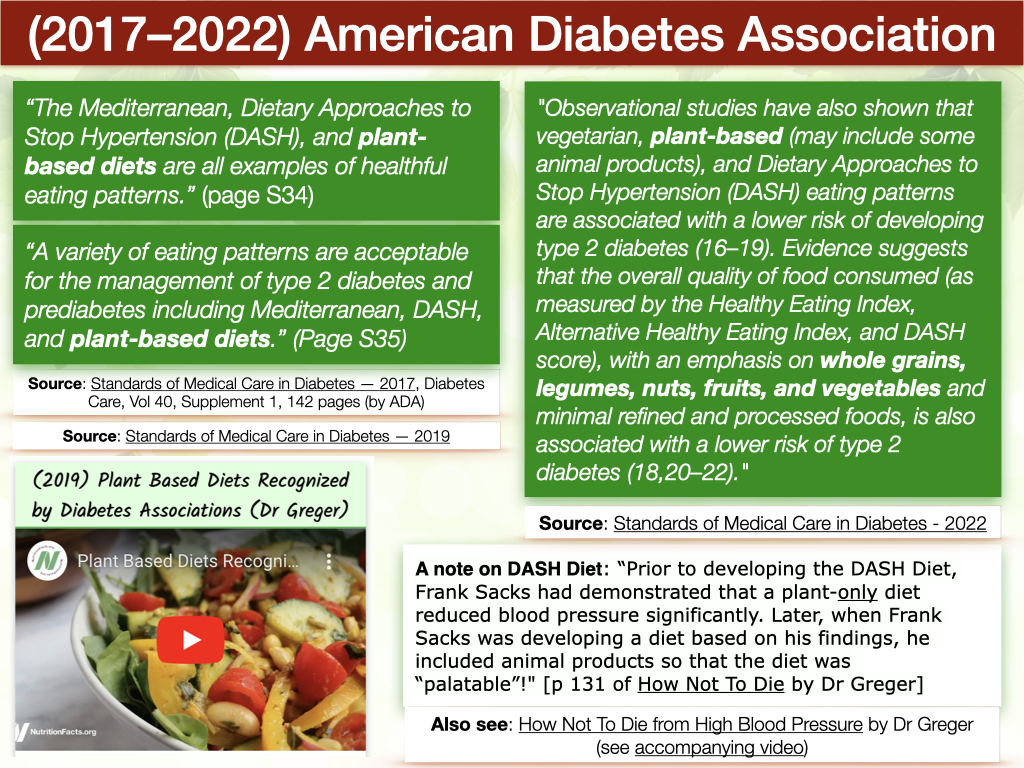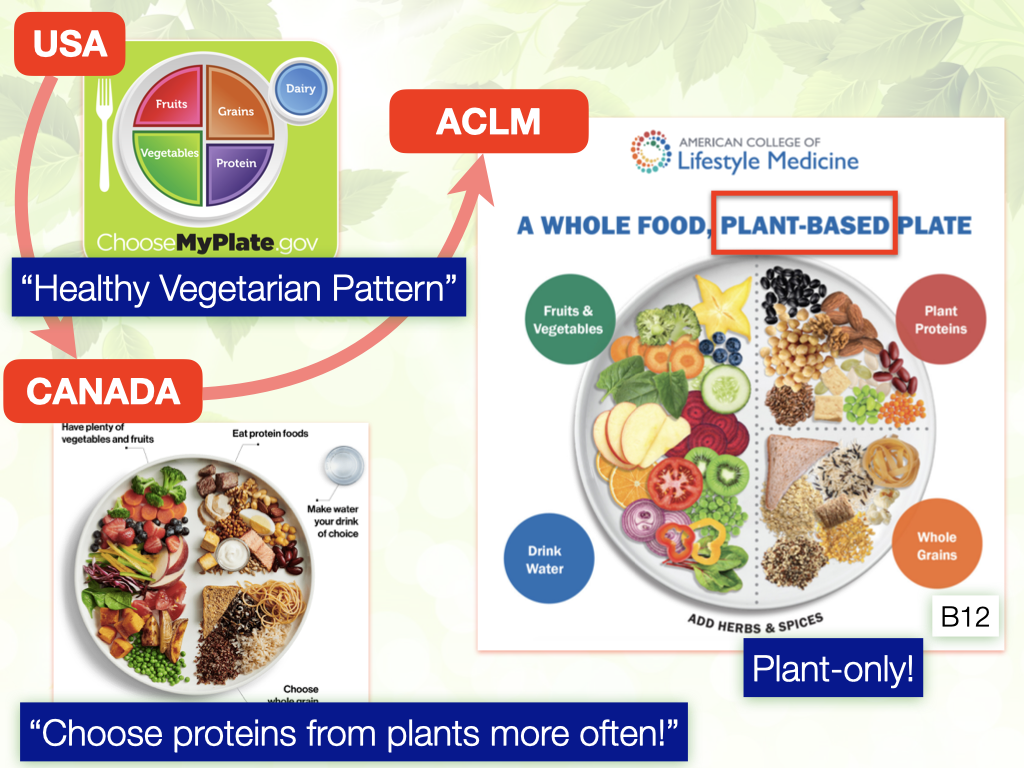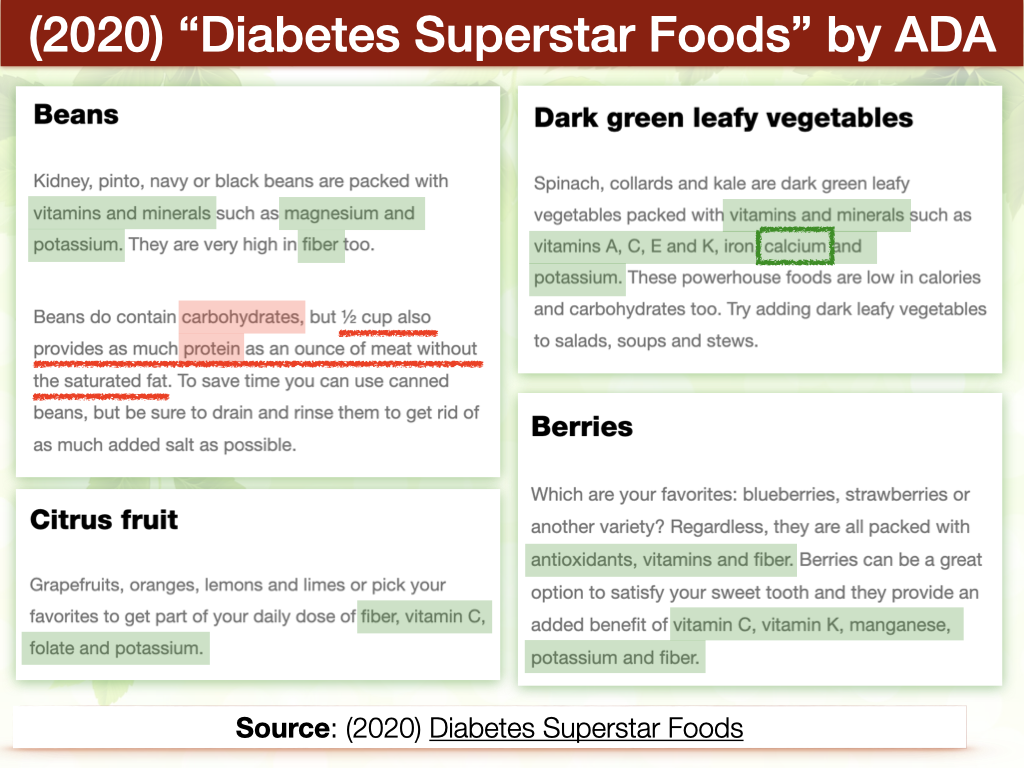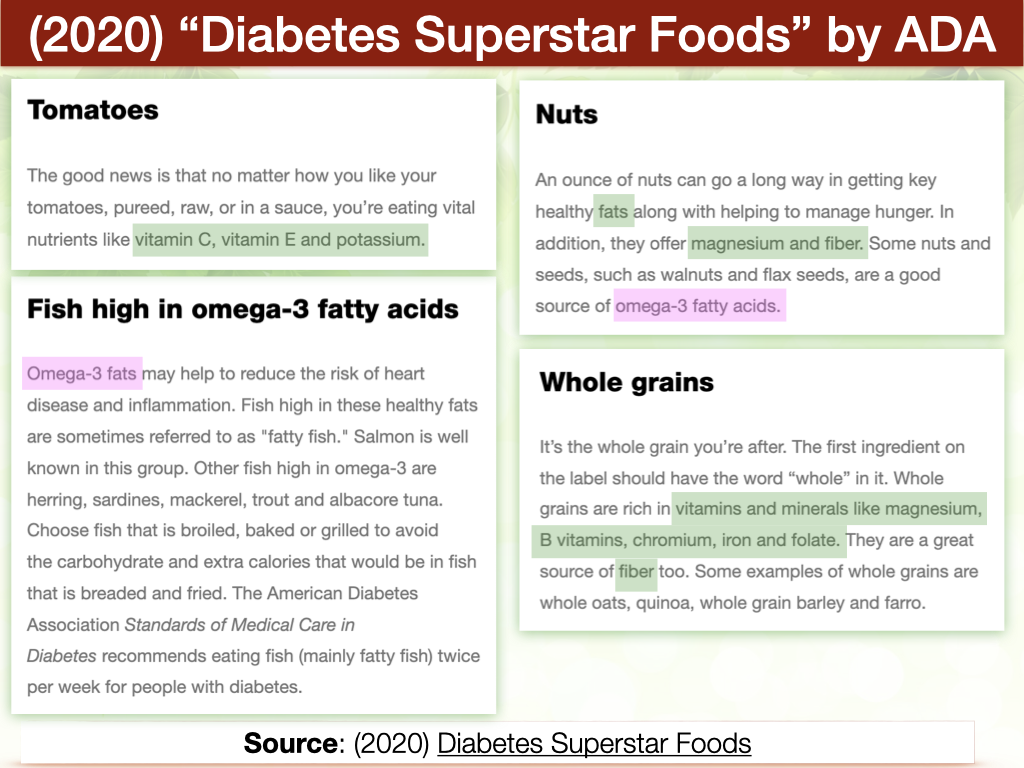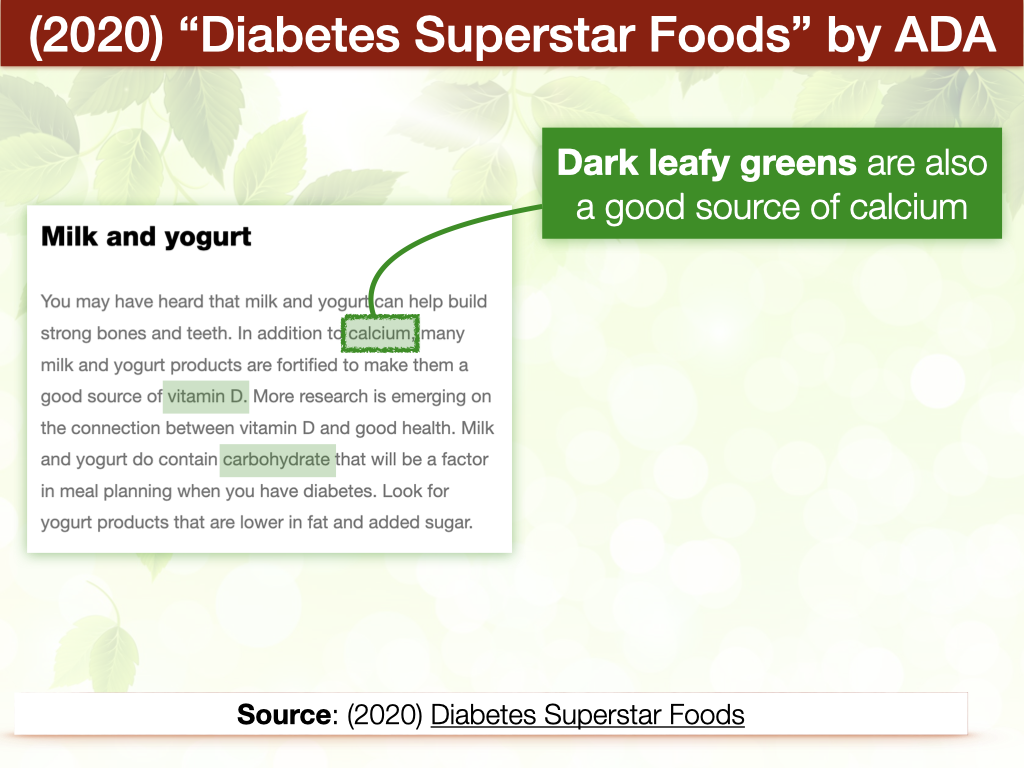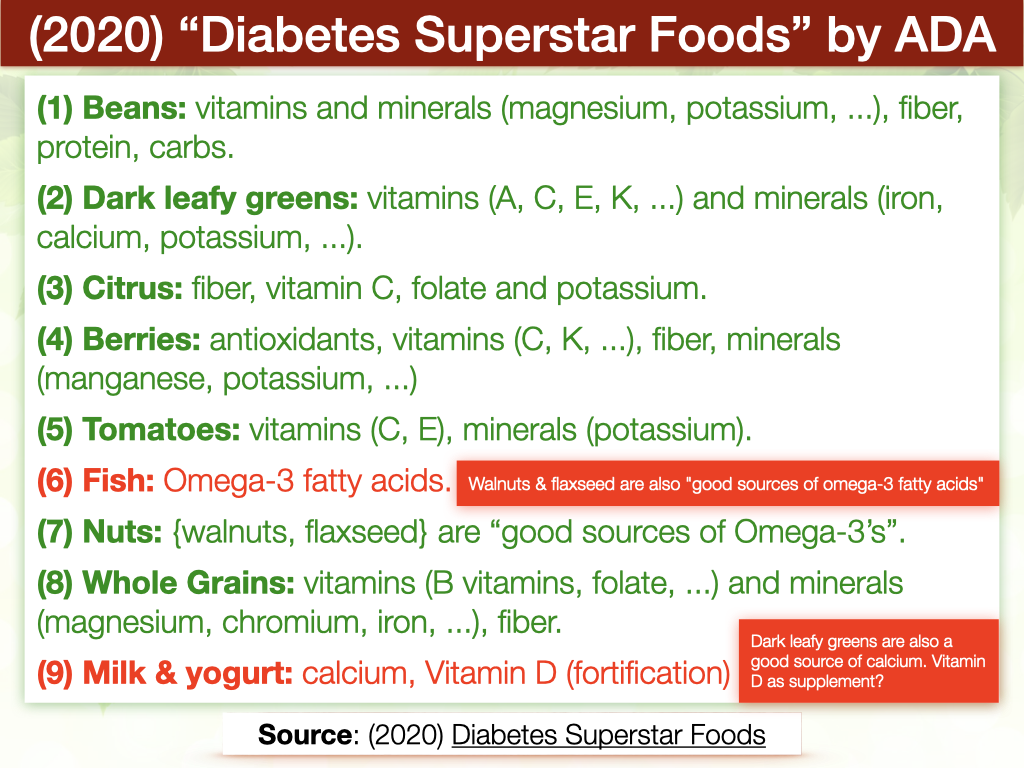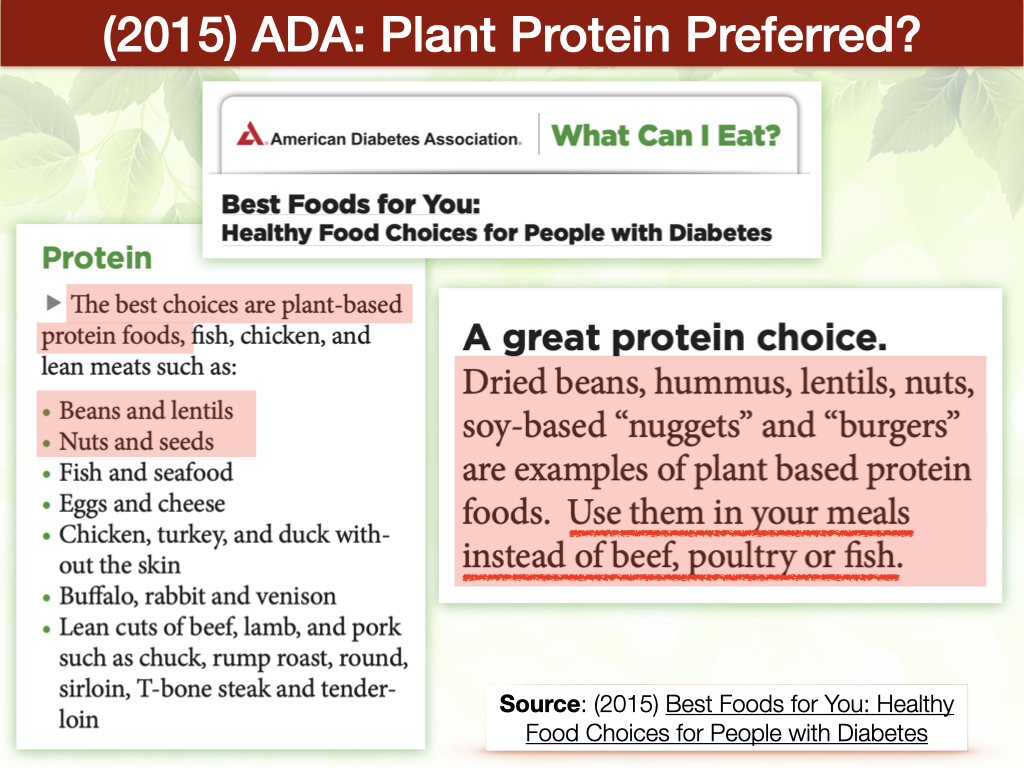ADA has devised the "Diabetes Plate Method" (see slide below). In the article Eat Good to Feel Good (2020), they mention that it's okay to derive proteins from plant sources like beans and lentils:
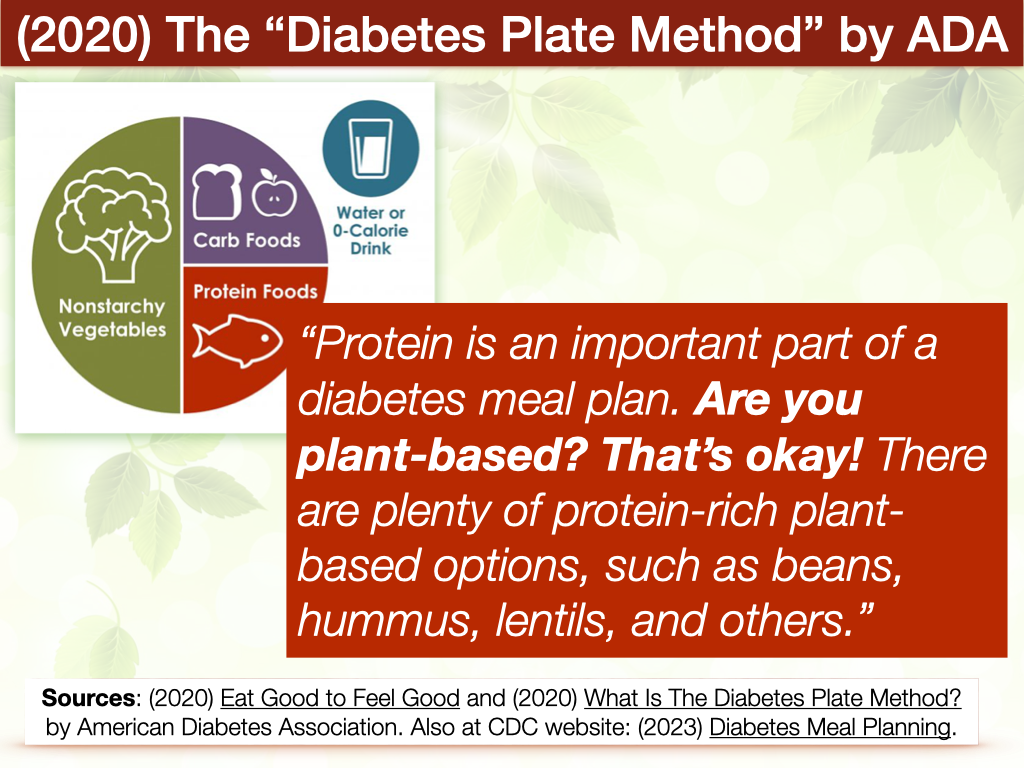
Let's study the article Diabetes Superstar Foods (2020). Nine foods or food groups are listed. Seven out of these nine are plant foods. Let's study the key nutrients of these foods, as highlighted in the ADA article:
Beans for protein? Did you notice that ½ cup of beans "provides as much protein as an ounce of meat" but "without the saturated fat"!Micronutrients: Did you notice that the ADA article repeatedly highlights micronutrients like vitamins, minerals, fiber, antioxidants and omega-3 fatty acids?
Omega-3 fatty acids: What is the key nutrient being highlighted in "Fish high in omega-3 fatty acids"? Omega-3 fatty acids. But if we choose to avoid fish (because we choose to be vegan or plant-based), then can we derive Omega-3 fatty acids from nuts and seeds? Yes! ADA article (Diabetes Superstar Foods (2020)) mentions walnuts and flax seeds as "good source of omega-3 fatty acids". In this context, it may be helpful to study: Omega-3 to Omega-6 Ratio in Nuts & Seeds: flax and chia stand out; hempseed and walnuts are okay. How much flax / chia to eat daily? Check out Dr Esselstyn's Guidelines For Essential Fatty Acids: Flax & Chia or 'Mastering Diabetes' Guidelines For Essential Fatty Acids. Calcium: A key nutrient derived from milk and yogurt. But if we are plant-based or vegan, can we get calcium from large amounts of dark leafy greens? Yes! ADA article (Diabetes Superstar Foods (2020)) mentions dark leafy grens as a source of calcium.Calcium in plant-based diets: Whole Food Plant-Based doctors like Dr Greger, Dr Esselstyn and Dr Fuhrman encourage that we consume dark leafy greens in large quantities daily.
In the article How to Get Calcium Without Dairy (2019, Dr Thomas Campbell) assures us:
Dr Greger says: "Dark leafy greens are the best veggies!" An excerpt from Optimum Nutrition Recommendations:
Dr Esselstyn: In Where do I get calcium? Dr Esselstyn ays:
Summary: What are the key nutrients in the article Diabetes Superstar Foods (2020) by ADA? See the slide below.
ADA doesn't explicitly say that plant protein is preferred. However, in the article Diabetes Superstar Foods (2020), the first food listed is beans:
In the article The Benefits of Beans and Legumes (2018), American Heart Association echoes the same benefits:
In other words, meat is a well known source of protein but there is a problem with meat: it has saturated fats which are discouraged by many organizations! Beans are plant foods packed with proteins but we avoid saturated fats!
Now let's study this publication: Best Foods for You: Healthy Food Choices for People with Diabetes (2015; archived at Wayback Machine). It reminds us that dried beans, hummus, lentils, nuts, soy-based 'nuggets' and 'burgers' are examples of plant-based protein foods. The article says: "Use them in your meals instad of beef, poultry or fish". [Note: Soy-based 'nuggets' and 'burgers' are indeed protein rich but such foods are Ultra-Processed Foods (UPFs), which are discouraged in many healthy eating guidelines. We may choose to consume actual soybeans or tofu or tempeh or soy milk instead of 'nuggets' and 'burgers' packed with isolated soy proteins and myriad other additives]

 Instagram
Instagram YouTube
YouTube